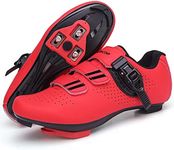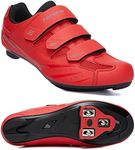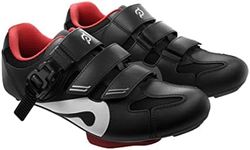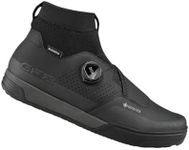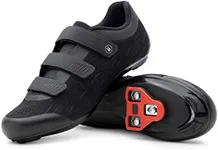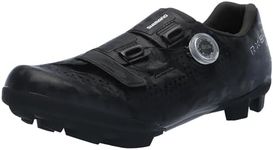Buying Guide for the Best Wide Bike Shoes
Choosing the right wide bike shoes is crucial for comfort, performance, and overall enjoyment of your cycling experience. Wide bike shoes are designed to accommodate wider feet, providing a better fit and reducing the risk of discomfort or injury. When selecting wide bike shoes, it's important to consider several key specifications to ensure you get the best fit and functionality for your needs.Fit and WidthFit and width are the most important factors when choosing wide bike shoes. These shoes are specifically designed to provide extra room in the toe box and midfoot area. It's important to try on different brands and models, as sizing can vary. Look for shoes that offer a snug fit without being too tight, ensuring that your feet have enough room to move comfortably. If you have particularly wide feet, consider shoes labeled as 'extra wide' or those with adjustable features like straps or laces.
Closure SystemThe closure system of bike shoes affects how securely they fit and how easy they are to adjust. Common closure systems include Velcro straps, ratcheting buckles, and BOA dials. Velcro straps are simple and easy to adjust, making them a good choice for casual riders. Ratcheting buckles provide a more secure fit and are often found on performance-oriented shoes. BOA dials offer precise adjustments and are great for fine-tuning the fit. Choose a closure system that matches your riding style and preference for ease of use.
Sole StiffnessSole stiffness is important for power transfer and comfort. Stiffer soles provide better power transfer from your legs to the pedals, making them ideal for competitive cycling. However, they can be less comfortable for long rides or walking. More flexible soles offer greater comfort and are better suited for recreational riding or touring. Consider your riding style and how much walking you plan to do when choosing the stiffness of your bike shoes.
MaterialThe material of the bike shoes affects their durability, weight, and breathability. Common materials include synthetic fabrics, leather, and mesh. Synthetic fabrics are lightweight, durable, and often more affordable. Leather offers a premium feel and can mold to the shape of your foot over time, providing a custom fit. Mesh panels enhance breathability, keeping your feet cool during long rides. Choose a material that balances durability, comfort, and breathability based on your riding conditions and personal preferences.
Cleat CompatibilityCleat compatibility refers to the type of pedal system the shoes can accommodate. The most common systems are two-bolt (SPD) and three-bolt (Look, SPD-SL) cleats. Two-bolt systems are typically used for mountain biking and offer easier walking, while three-bolt systems are used for road cycling and provide a larger contact area for better power transfer. Ensure that the bike shoes you choose are compatible with your pedals and the type of cycling you do.
VentilationVentilation is important for keeping your feet cool and dry, especially during long rides or in hot weather. Look for shoes with mesh panels or perforations that allow air to circulate. Good ventilation helps prevent overheating and reduces the risk of blisters and discomfort. If you ride in varying weather conditions, consider shoes with adjustable ventilation features or those that can be paired with shoe covers for added versatility.
WeightThe weight of bike shoes can impact your overall riding experience. Lighter shoes reduce the effort needed to pedal, making them ideal for competitive cycling where every gram counts. However, lighter shoes may sacrifice some durability and support. Heavier shoes often offer more support and durability, making them suitable for recreational riding or touring. Consider the balance between weight and durability based on your riding style and preferences.




